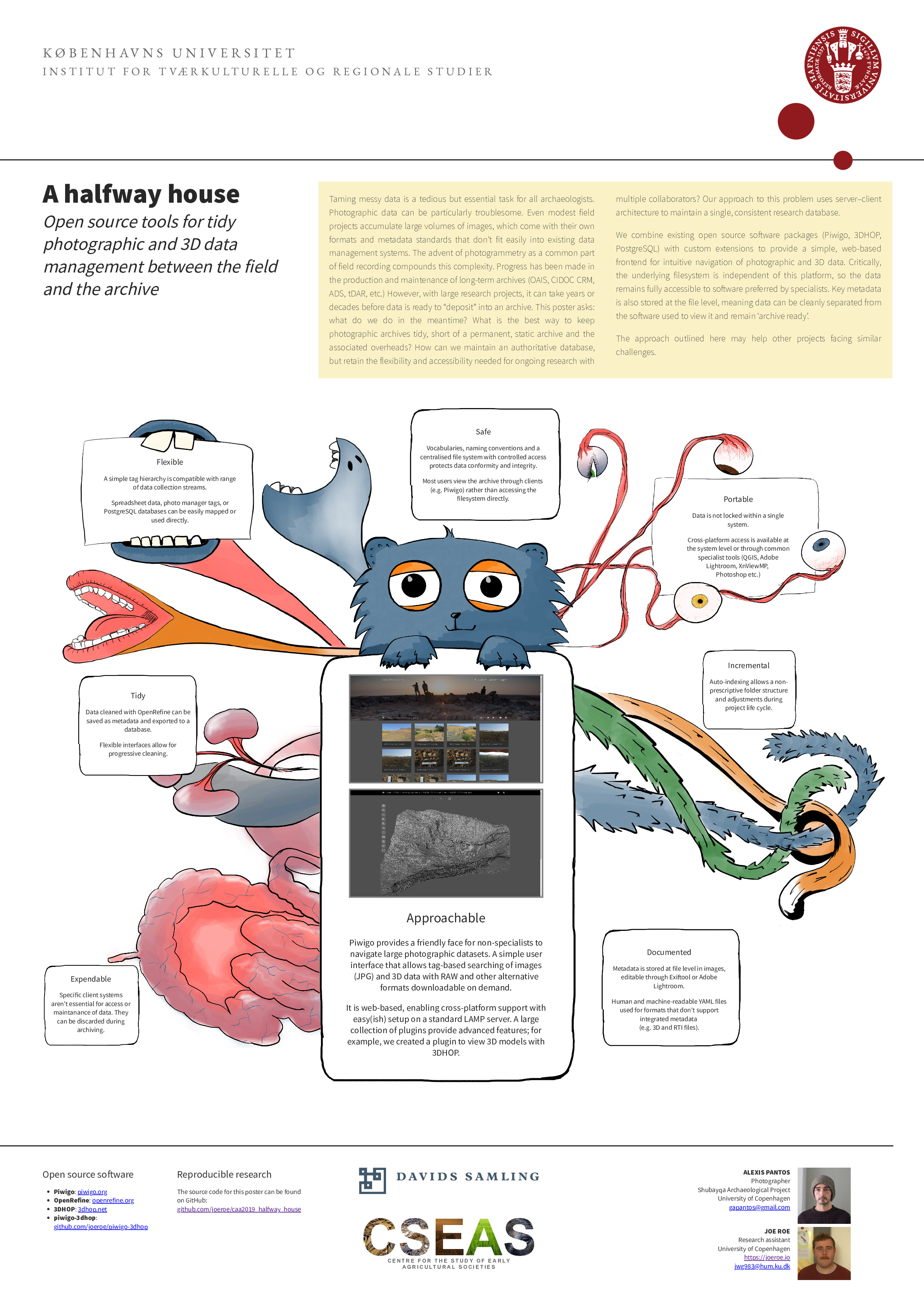A halfway house: open source tools for tidy photographic and 3D data management between the field and the archive
G. Alexis Pantos and Joe Roe
Presented at Computer Applications & Quantitative Methods in Archaeology (CAA), Kraków, 2019.

Abstract
Taming messy data is a tedious but essential task for all archaeologists. Photographic data can be particularly troublesome. Even modest field projects accumulate large volumes of images, which come with their own formats and metadata standards that don’t fit easily into existing data management systems. The advent of photogrammetry as a common part of field recording compounds this complexity. Progress has been made in the production and maintenance of long-term archives (OAIS, CIDOC CRM, ADS, tDAR, etc.) However, with large research projects, it can take years or decades before data is ready to “deposit” into an archive. This poster asks: what do we do in the meantime? What is the best way to keep photographic archives tidy, short of a permanent, static archive and the associated overheads? How can we maintain an authoritative database, but retain the flexibility and accessibility needed for ongoing research with multiple collaborators? Our approach to this problem uses server–client architecture to maintain a single, consistent research database. We combine existing open source software packages (Piwigo, 3DHOP, PostgreSQL) with custom extensions to provide a simple, web-based frontend for intuitive navigation of photographic and 3D data. Critically, the underlying filesystem is independent of this platform, so the data remains fully accessible to software preferred by specialists. Key metadata is also stored at the file level, meaning data can be cleanly separated from the software used to view it and remain ‘archive ready’. We suggest that our approach may help other projects facing similar challenges.
Keywords
Databases; photography; 3D; open source
Links
- Poster (PDF, 15.9 MB)
- Abstract (PDF, 62 KB)
- Source repository (GitHub)